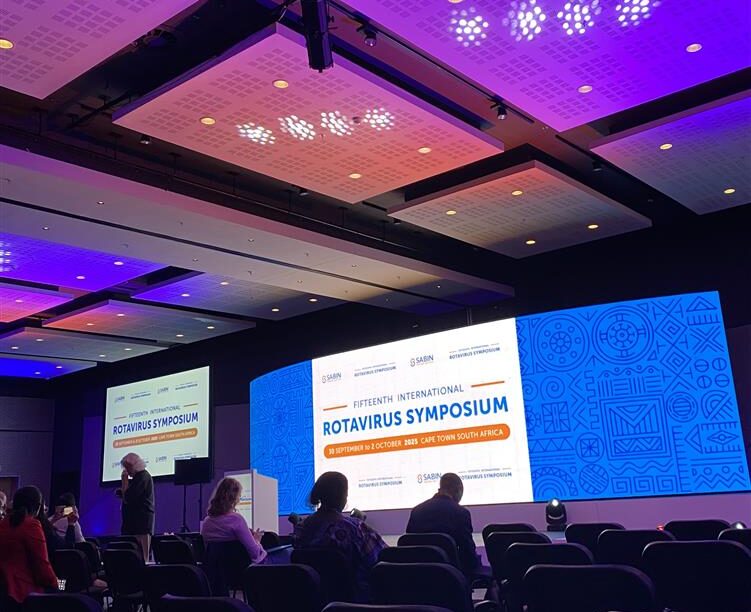
Four times rotavirus vaccines gave us much-needed good news in 2020

An infant in Dibrugarh, Assam, India receives ROTAVAC, a lower-cost rotavirus vaccine made in India. In 2020, new rotavirus vaccines and technologies helped expand access despite challenges from the COVID-19 pandemic. Photo: IVAC/Monica Tiwari
Here at DefeatDD, our thoughts this year have been with the children affected by COVID-related disruptions to vaccines, essential medicines, nutrition, and livelihoods.
Routine immunization coverage has, without a doubt, suffered. In 2021, we will continue to work with partners to rally and recover back with stronger, more equitable systems to fortify communities, especially children, against chronic and acute infectious threats.
Based on your favorite posts from the past year, you are just as hungry for good news as we are, and it frequently came courtesy of rotavirus vaccines. Here are four moments from our blog worth celebrating—and believe it or not, they all happened in 2020:
1. The replenishment event for Gavi, the Vaccine Alliance, the mechanism through which low-income countries receive donor support to introduce rotavirus (and many other) vaccines, was a resounding success. Gavi’s work is more important than ever, and we applaud all the donors for making these important, sound investments in children’s health.
 A 2019 PATH analysis projected significant lives and money saved by Gavi support for rotavirus vaccination in the next decade. In 2020, that promise came closer to reality with successful fundraising for Gavi’s next phase.
A 2019 PATH analysis projected significant lives and money saved by Gavi support for rotavirus vaccination in the next decade. In 2020, that promise came closer to reality with successful fundraising for Gavi’s next phase.
2. PATH’s health economics team gifted us with some great studies this year, including analyses confirming that rotavirus vaccines are a cost-effective investment in Nigeria and in Palestine. Unsurprisingly, the team found that prioritizing historically underserved subpopulations maximizes national investments in rotavirus vaccination, a finding which applies to other low- and middle-income countries, too.
3. In keeping with the cost-savings theme, Myanmar became the first country to use a new rotavirus vaccine delivery technology evaluated by PATH: the blow-fill-seal (BFS) container. This method of filling vaccine vials streamlines the process, saves time, improves safety, and reduces cold chain volume. Better still, the BFS container could be used for other vaccines in addition to rotavirus.
4. Also this year, Ghana made a move to increase sustainability of its rotavirus vaccine program, becoming the second country in Africa to introduce ROTAVAC and the first Gavi-eligible country to elect to switch to one of the newly WHO-prequalified rotavirus vaccines. The growing list of WHO-prequalified vaccines creates more affordable options for policymakers and ultimately means greater access for children who need it most. And thanks to PATH’s Rotavirus Vaccine Cost Calculator, launched this year, country decision-makers now have an easy way to estimate the most affordable vaccine choice for their country.
 In 2020, additional countries introduced or switched to one of the more recently WHO-prequalified rotavirus vaccines because of their lower cost. We remain hopeful about the opportunity to build back better in 2021. We would be remiss, of course, not to mention the good news headline eagerly anticipated all year: the development and approval of highly effective vaccines against COVID-19, with more to come in the pipeline. (And maybe advocates can take some inspiration from rotavirus vaccines for this, too?) This holiday season, we are especially grateful for the public health wonder that is vaccination, one of our most powerful disease prevention tools.
In 2020, additional countries introduced or switched to one of the more recently WHO-prequalified rotavirus vaccines because of their lower cost. We remain hopeful about the opportunity to build back better in 2021. We would be remiss, of course, not to mention the good news headline eagerly anticipated all year: the development and approval of highly effective vaccines against COVID-19, with more to come in the pipeline. (And maybe advocates can take some inspiration from rotavirus vaccines for this, too?) This holiday season, we are especially grateful for the public health wonder that is vaccination, one of our most powerful disease prevention tools.
We’re also grateful for safe water, sanitation, and soap. A blog from 2019, How does soap work?, gets an honorable mention as one the most visited pages on our site this year. We’re sad about the cause behind the sudden interest in handwashing… but we can’t deny that seeing long-underrated hygiene in the headlines warms our hearts.
In the year ahead, we’re focused more than ever on truly equitable access to essential health tools for children, everywhere. In the end, tirelessly working toward giving everyone, every child, the opportunity to live a full, heathy life is what public health is all about.


